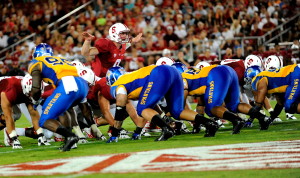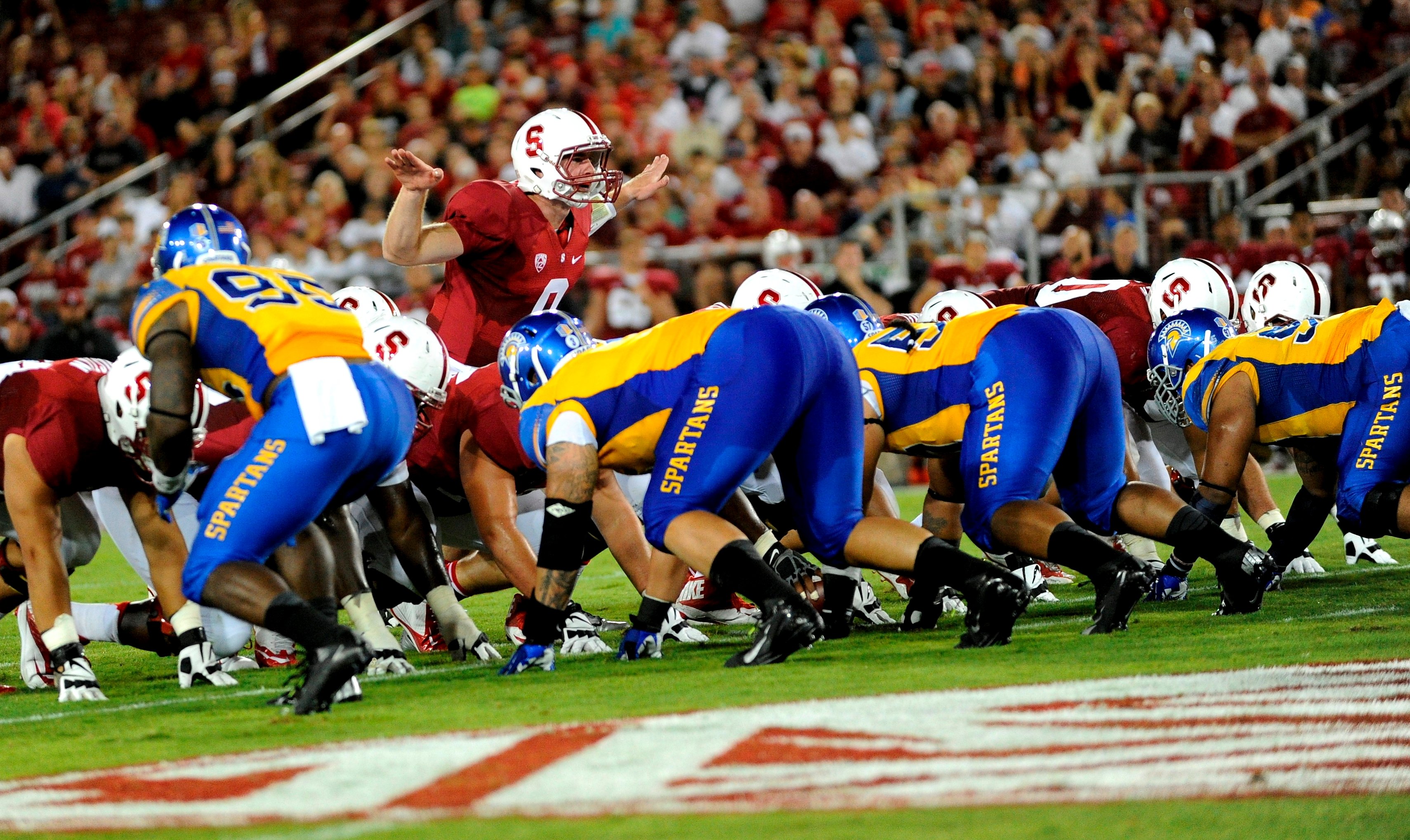The first time that Stanford football traveled east of the Mississippi, it took down Army 26-0 at Yankee Stadium in front of 86,000 fans. That was back in 1928, when the legendary Pop Warner was at the helm of the team, when Stanford played in the same conference as Idaho and Montana and when the program was two years removed from its first — and only — national championship.
Though it’s making the trip under different circumstances this weekend, the Cardinal is hoping for a similar result 85 years later.
Following a convincing 34-13 victory against San Jose State in its season opener last weekend, No. 5 Stanford (1-0) takes on Army (1-1) at West Point tomorrow before beginning its grueling slate of nine consecutive Pac-12 opponents.

The Cardinal is considered a heavy 30-point favorite going into tomorrow’s contest, and part of that can be attributed to Stanford’s tremendous size advantage over the undersized Black Knights. Not only is the average weight of Stanford’s defensive linemen — fifth-year senior Ben Gardner and seniors Henry Anderson and David Parry — nearly 40 pounds heavier than the mean weight of Army’s offensive linemen, but fifth-year senior outside linebacker Trent Murphy is also heavier than three of the five linemen, including the center. The disparity is even larger on the other size of the ball, where the Cardinal’s offensive linemen, on average, outweigh Army’s defensive line by almost 70 pounds, and junior wide receiver Devon Cajuste weighs the same as Army’s right end.
However, head coach David Shaw isn’t sold on what seems to be an obvious advantage.
“The problem is, a lot of times when you’re going against smaller the guys, the smaller guys are quicker,” Shaw said. “It’s hard sometimes for big guys to get down against guys who are smaller than them. We have to be ready for movement, a lot of slants and twists and guys moving up front in different combinations.”
The Cardinal run defense was in its dominant 2012 form against San Jose State last weekend, allowing the Spartans only 35 rushing yards. A critical fourth-quarter interception by senior free safety Ed Reynolds also extended Stanford’s streak of consecutive games with at least one takeaway to 25, the longest in the country. Still, a few defensive players, including Reynolds and Murphy, were far from satisfied with the unit’s performance last Saturday and emphasized the need to be more physical up front.
Tomorrow, Stanford’s defense has the chance to display improvement as it attempts to stymie the Black Knights’ triple-option offense, hardly an easy task considering that they averaged nearly 370 yards on the ground per game last season. And while Army is largely one-dimensional on offense — the team completed just 51 passes in 12 games last year — the Black Knights are certainly physical in the trenches. In fact, Army linemen are well known for utilizing cut blocks to take defenders down to the ground — a cause for injury concern for some coaches, but not for Shaw.
“I’m not worried about [injuries] as much as getting off those blocks,” Shaw said. “It’s paramount for guys to learn how to play those cut blocks, use our hands and sidestep them.”
During this past week’s practices, the Cardinal defense saw plenty of reps against the scout team that mimicked Army’s run-heavy triple option. Backup quarterbacks David Olson and Ryan Burns, along with third-string strong safety John Flacco, orchestrated the simulation from under center.
Handling Army’s triple-option offense is tricky enough, but the Cardinal offense will also see a rare defensive scheme — the Double Eagle Flex — that Shaw describes as a 5-3-3. The Black Knights defense had a decent debut two weeks ago, holding Morgan State to 12 points in a 28-12 victory, but was trampled by Ball State on the ground for 363 grounds in last Saturday’s 40-14 lopsided loss.
Should Army load the box — as it often does — to stop Stanford’s power running game, junior quarterback Kevin Hogan will have to take advantage of the open passing lanes. Hogan looked crisp in marching the offense down the field drive after drive against San Jose State, but also missed a few deep throws to open targets, including Cajuste and junior wide receiver Ty Montgomery. Shaw isn’t too worried about those misfires, however; after all, former Stanford quarterback Andrew Luck ’12 made the same mistake of overthrowing his receivers on deep balls early in his collegiate career.
“It’s excitement,” Shaw explained. “Devon’s open in the corner, [Hogan] got really excited and launched that thing. Ty Montgomery had a double move and was splitting the safety and the corner, and he launched it. He got so excited…He saw it, he read it and he did everything right until the throw. By coaching standards, he’s still a freshman. He’s only started six games; he hasn’t started 12 games yet. We have to remember: He’s still young.”
“It was okay,” Hogan added, assessing his own performance against SJSU. “I missed a couple run checks.”
Cajuste, Hogan’s favorite target in the first half of last Saturday’s game, looks to take advantage of the mismatches that he will create against the smaller Army defensive backs tomorrow. Given Cajuste’s deadly combination of size and speed, it might come as a surprise that the 6-foot-4, 228-pound junior only had 1 reception coming into 2013. But after collecting his first career touchdown catch on a 40-yard deep post last week, Cajuste looks primed to be a key player in the passing game this season.
“I went from a nobody to a somebody,” Cajuste said. “I finally — finally, finally — had an understanding of not pumping up game day, not being overly stressed and very quiet and very serious because that’s not practice. Going into [SJSU], I kept saying to a few of my teammates, ‘It’s just practice.’ So when I came out to the field, it was literally just like, ‘Hey, we’ve practiced this a million times. Why overthink it?’”
Cajuste and Hogan are among a handful of Stanford players who come from the East Coast. A Long Island native, Cajuste is expecting a large contingent of his family and friends to attend the game while Hogan, who grew up in Virginia, has family in upstate New York.
“It’ll be exciting,” Hogan said. “[West Point] is a historic place. They’re going to be a good team. It’s going to be nice to travel across the country because a lot of kids on our team are from the East Coast, so their families and friends will be able to travel.”
Stanford and Army square off at Michie Stadium tomorrow. The contest is schedule for a 9 a.m. PDT kickoff time, with television coverage on CBS Sports Network.
Contact George Chen at gchen15 “at” stanford.edu.
For in-game updates, check stanforddaily.com for our liveblog and follow @StanfordSports on twitter.
